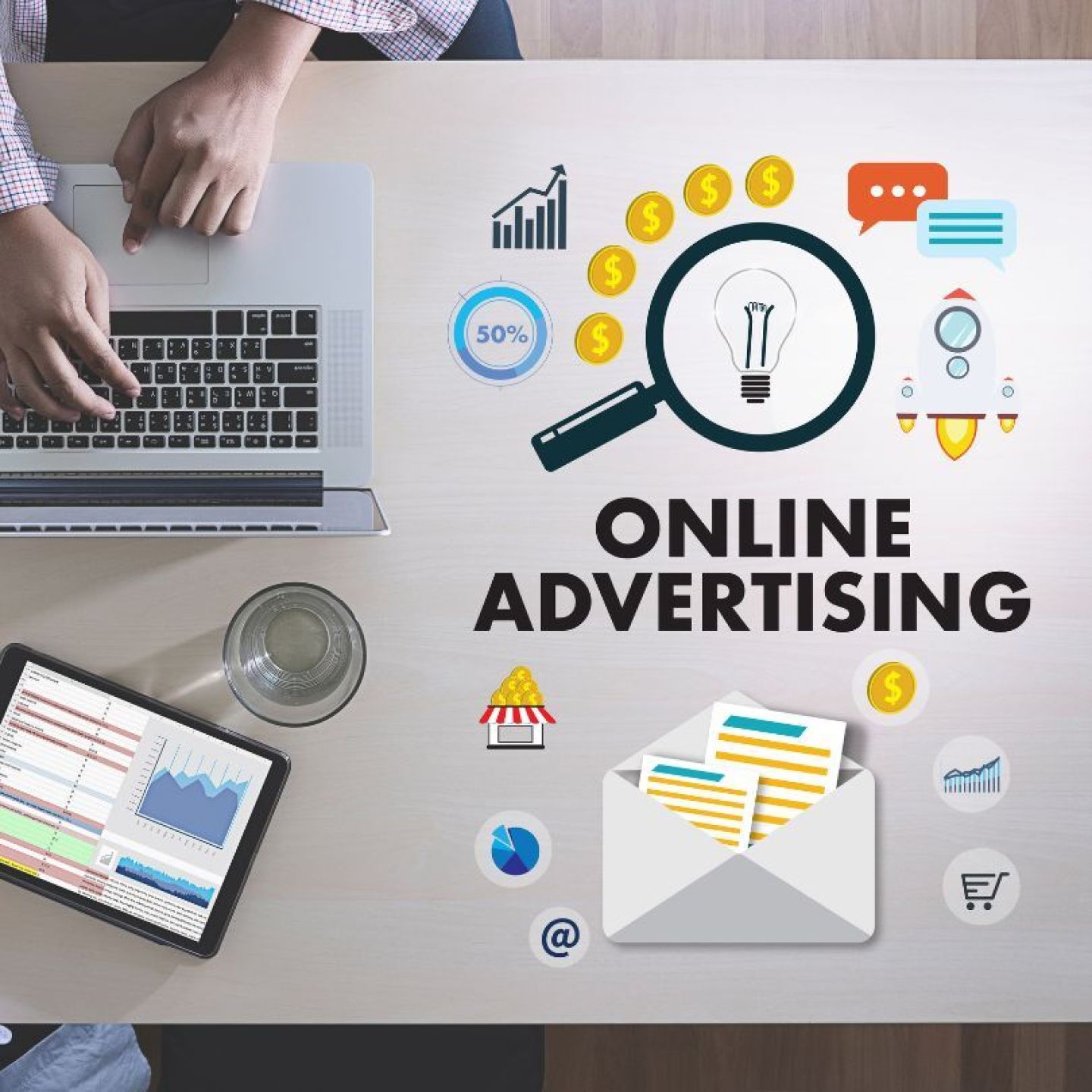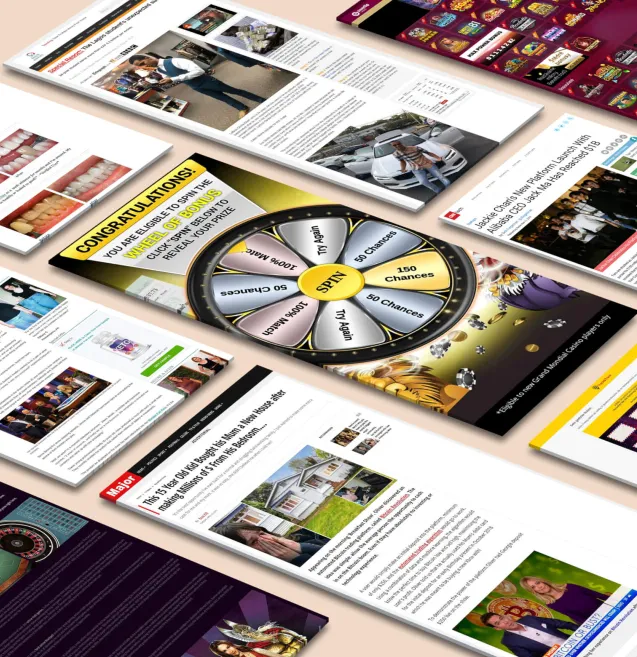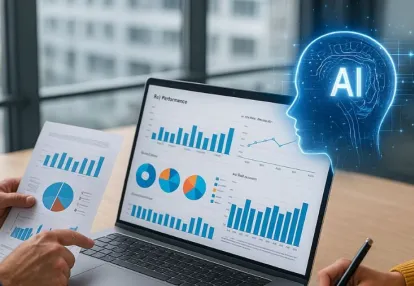
Our spy tools monitor millions of popup and pop-under from over 90+ countries and thousands of publishers.
Get StartedProgrammatic advertising has changed the game in digital marketing by automating how ad space is bought and sold. Now, with the help of AI optimization, this technology is reaching new heights, creating a powerful combination that transforms campaign performance.
AI-driven programmatic advertising uses machine learning algorithms to analyze large amounts of data instantly, making quick decisions about:
By integrating AI into programmatic advertising platforms, marketers can:
With AI, you can now streamline your advertising operations, improve campaign performance, and deliver more relevant ads to your target audience. This combination of programmatic efficiency and AI intelligence sets a new standard for success in digital advertising.
AI-driven real-time bidding is changing the game for advertisers competing for ad space online. This technology uses advanced algorithms to analyze various data points in a matter of milliseconds, allowing it to determine the best bid for each ad impression.
Here are some key factors that AI takes into account when deciding on the optimal bid:
The beauty of this approach is that the AI bidding algorithms are constantly learning and adapting. They adjust their bid strategies based on real-time performance data, which means advertisers can expect to see some significant benefits:
To ensure that these dynamic bid strategies are working effectively, it's important to keep an eye on certain key metrics:
These metrics provide valuable insights into how well each individual ad impression is performing and whether or not the current bidding strategy needs to be adjusted.
One of the main advantages of using AI for programmatic bidding is its ability to predict user behavior with a high degree of accuracy. By leveraging machine learning models, these systems can analyze vast amounts of historical data to identify patterns and make informed predictions about how likely a particular user is to convert.
This information is then used to inform bid amounts for each impression opportunity - ensuring that advertisers are always paying optimal prices for their target audiences.
Another area where AI can make a significant impact is in dayparting strategies - or adjusting bids based on peak performance times and audience availability.
By analyzing historical performance data, these algorithms can identify specific times of day or days of the week when certain segments are more likely to engage with ads. This level of precision helps maintain consistent campaign performance while maximizing engagement rates across different time zones and markets.
But real-time optimization isn't just limited to adjusting bids based on this information alone. It also includes other factors like:
By taking all these elements into consideration, advertisers can create a comprehensive approach to campaign optimization that drives measurable results.
AI-powered machine learning algorithms are changing the game when it comes to audience targeting. These algorithms analyze large amounts of data on user behaviors, preferences, and interactions to identify specific groups of people who are most likely to respond to an advertisement.
The algorithms use various factors to create these audience segments, including:
By using machine learning algorithms for audience targeting, advertisers can reap several benefits:
One of the key advantages of AI-powered personalization is its ability to deliver individualized experiences on a large scale. Here's how it works:
These capabilities allow advertisers to go beyond basic demographic targeting and create truly personalized advertising experiences that resonate with their target audience.
In addition to analyzing past behaviors, machine learning algorithms also have the potential for predictive modeling. This means they can forecast future behaviors based on historical data patterns.
By combining predictive modeling with real-time audience segmentation updates, advertisers can proactively reach out to individuals before they even express interest in a product or service.
This shift towards predictive targeting opens up new possibilities for marketers looking to stay one step ahead of their competition and deliver relevant messages at precisely the right moment.
AI-powered creative optimization is changing the way advertisers create and deliver ad content. With the help of generative AI tools, advertisers can now create dynamic creatives that automatically adapt to different audience segments, providing personalized experiences on a large scale.
These AI tools analyze large amounts of data to predict which creative elements will resonate with different audience segments. The system continuously learns from performance metrics, refining its approach to maximize engagement.
Predictive ad analytics enable these tools to anticipate which creative combinations will drive the highest engagement rates. The AI adjusts elements like font size, image placement, and messaging in real-time, optimizing for maximum impact.
Dynamic creative optimization platforms integrate seamlessly with existing programmatic advertising systems, allowing for instant adjustments based on performance data. These tools transform traditional static ads into responsive, intelligent content that evolves with your audience's preferences.
AI-powered fraud detection systems serve as vigilant guardians in the programmatic advertising landscape. These sophisticated systems analyze patterns, traffic sources, and user behaviors in real-time to identify suspicious activities:
Data safety protocols work hand-in-hand with fraud detection to protect both advertisers and consumers. The implementation of AI-driven safety measures includes:
"AI doesn't just detect fraud - it predicts and prevents it before damage occurs" - Digital Advertising Security Association
Key Data Protection Features:
AI systems continuously adapt to new threats by learning from emerging fraud patterns. This proactive approach helps maintain campaign integrity while protecting advertising investments. The technology also ensures compliance with regional data protection regulations through:
For instance, understanding the intricacies of cookie consent and GDPR is essential for maintaining compliance in the digital advertising space.
These security measures create a safer advertising ecosystem where brands can confidently deploy their campaigns while maintaining consumer trust. Furthermore, exploring innovative advertising strategies like pop advertising can provide brands with scalable options while adhering to these safety protocols.
AI automation is changing the game in campaign management by making complex tasks simple and efficient. Instead of doing everything manually, we can now use AI to automate many parts of the process. This not only saves time but also makes it possible to handle more campaigns at once.
Let's take a closer look at how this works:
AI technology enables you to handle multiple campaigns simultaneously while maintaining precision and effectiveness. The system learns from each campaign, continuously improving its performance and scaling capabilities. You can expand your reach across different markets and demographics without proportionally increasing your team size or operational costs.
These automation capabilities allow your marketing team to focus on strategic planning and creative development while AI handles repetitive tasks. The result: enhanced campaign performance, reduced operational costs, and increased ROI across your advertising initiatives.
Leading brands across industries have achieved remarkable results through AI-driven programmatic advertising. Here's a look at some standout success stories:
These success stories demonstrate AI's transformative impact on programmatic advertising across different market segments. Each brand leveraged unique aspects of AI technology to address specific marketing challenges and achieve measurable improvements in campaign performance.
AI-driven programmatic advertising raises critical ethical concerns that demand careful attention from marketers and advertisers. The implementation of these powerful technologies requires a balanced approach between innovation and responsible practices.
The advertising industry must embrace these ethical considerations as fundamental components of AI-driven programmatic strategies. Companies that prioritize ethical practices build trust with consumers while maintaining competitive advantages in the digital advertising landscape.
AI-driven programmatic advertising is a game-changer in digital marketing. By combining advanced AI technologies with programmatic systems, businesses can achieve precise targeting and create campaigns that connect with the right audience at the right time.
The results speak for themselves:
Your journey toward revolutionizing digital marketing starts now. Take these steps to transform your advertising strategy:
Don't let your competitors gain the edge. Embrace programmatic advertising with AI optimization today and unlock the full potential of your digital marketing campaigns. Your audience is waiting - it's time to deliver the personalized experiences they expect.
Receive top converting landing pages in your inbox every week from us.
How-To
AI is transforming the way advertisers approach pop campaigns in 2025. Discover how automation, predictive analytics, and real-time optimization can enhance targeting and boost engagement. Learn practical tips for creating smarter, high-performing pop ads that deliver measurable results. Perfect for marketers ready to stay ahead in the evolving world of AI-driven advertising.
Priya Kapoor
7 minDec 8, 2025
None
Q4’s advertising landscape is crowded, but smart pop ad strategies can help your brand stand out. Learn how to capture attention, reduce bounce rates, and drive conversions even amid the seasonal overload. Explore targeting techniques, creative best practices, and timing tactics that deliver real results. Ideal for advertisers looking to make the most of Q4’s busiest—and most competitive—season.
David Kim
7 minDec 3, 2025
In-Depth
After the holiday rush, analyzing ad performance is key to improving future results. Discover how AI can uncover hidden insights, identify optimization opportunities, and refine your targeting for better ROI. Learn how data-driven automation helps sustain momentum even after peak season. Ideal for marketers seeking smarter ways to enhance post-holiday campaign performance.
Samantha Reed
7 minNov 28, 2025




